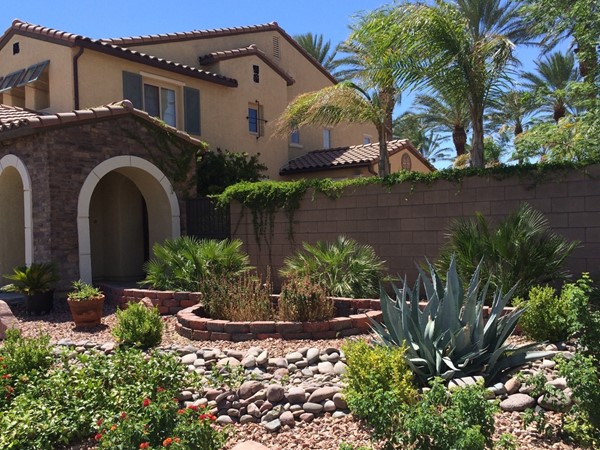
Sustainable landscaping, while often called “green” on labels and in the media, usually comes in a variety of other colors. The idea behind dry-scaping or xeriscaping is to use less water, conserve and protect local wildlife, promote the local environment and use less energy. That doesn't mean you're stuck with the desert look though. Most environments support a wide variety of plants, so just think about what grows naturally in your area. Before you get started on updating your home from a high-water consumption—though beautiful—green lawn to modern eco-friendly desert-scaping, dry-scaping or xeriscaping in a variety of reds, blacks, blues, and browns (and some green too) it's essential to plan.
Who is going to Use it?
Think about who uses your existing lawn or patio. Do the kids play on it? What about BBQs with outdoor games? It’s important to ensure that your new dry-scaping features serve similar purposes, or you could end up with useless outdoor space, which is not good at all. Stay away from harsh gravel for kids play areas, and try something like recycled tire rubber, mulch, or sand for softer landings and fewer skinned knees. Use paving stones to create paths and borders around local flora you don’t want visitors to walk through and combine it with various gravels for a stylish look.
Where Should Each Part Go?
When setting up your new yard, think about what elements you currently have, and how shade, sun, natural water, and wind fit into your yard. Pay attention to how the ground slopes, using the lowest points for plants since water pools there. Keep any existing trees and other local flora and include additional shade tolerant plants around them. Anywhere wind is likely to blow away your ground covering, go with heavier ground cover such as rocks, paving stones, or plants that are anchored in by the roots.
What Should You Use?
In addition to natural ground coverings such as rock, mulch, and paving stones, try alternative recycled materials to add some color to your landscape. Recycled tires make soft, brightly colored additions for play areas; recycled concrete and brick can be used in retaining walls and rock gardens; even glass gets recycled and tumbled into colorful "mulch" which is excellent for adding designs to pathways or as borders to raised rock gardens and flower beds. Ask at your local gardening shop, find an eco-certified landscaping company or just search the internet to find out what plants are best to use in your area for water and soil conservation. Double check their water usage requirements, and if they need a boost in the driest seasons, try installing a drip-irrigation system that adds water in a slow and controlled manner which helps reduce waste caused by overwatering.
How to take care of it?
There is no lawn to mow all the time, so it should be easy, right? Yes and no. Keep an eye on your new xeriscape to ensure it doesn't become a bed full of weeds that quickly get out of control. Before using any old weed killer, check to make sure the herbicide works within the environment and may safely be used around children and animals. As a preventative measure, try covering the ground underneath any gravel, mulch, or stones with water-permeable landscaping fabric. The larger rocks or ground coverings will hold it down, but for lighter materials use garden staples for extra security. Never, ever use plastic underneath your gravel or mulch. It will collect water, slide around and eventually end up in a landfill, which is what you've tried to avoid in the first place.
Whether you want to know if your current property value will increase with xeriscaping or want your agent to choose homes with “green" landscaping just ask! Your real estate agent will happily assist you.
About the Author
